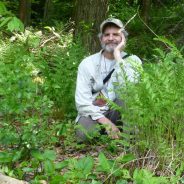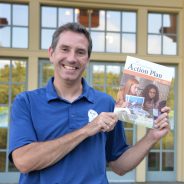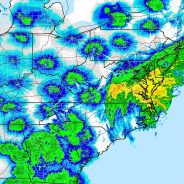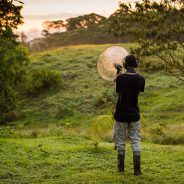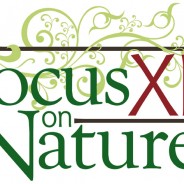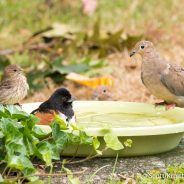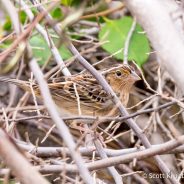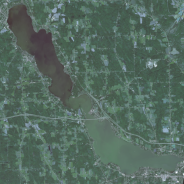I love this time of year. After the exuberance of summer and the vibrant colors of fall, I’m thankful for the days growing shorter. The nights longer. Temperatures falling. Silhouettes of bare branches against a leaden sky promising snow. All of nature winding down. Encouraging quiet. Reflection. Introspection. [more]
Our Changing Forests with Professor Jonathan Titus (SUNY Fredonia)
Dr. Jonathan Titus – professor of biology, botany and ecology at SUNY Fredonia – will deliver a program at RTPI on Wednesday, November 9th at 7pm summarizing his current research addressing many aspects of the rapid changes underway in forests throughout our area. “Our forests are changing very fast due to non-native invasive plant species, tree diseases (beech bark disease, hemlock wooly adelgid and emerald ash borer), deer overpopulation and climate change,” Dr. Titus explained, “so I am tracking tree growth and understory...
read moreRTPI’s 2016-2021 Action Plan
As part of our ongoing strategic planning efforts, RTPI is excited to release a 5-year action plan describing the mission-driven programming that we are developing in all three of our focal areas: Art, Education and Conservation. This Action Plan outlines how the synergy between these focal areas strengthens the important work that Roger Tory Peterson started, and that RTPI now continues. Like Dr. Peterson, our work transcends political and other boundaries, and RTPI operates at different geographic levels. Our Action Plan 2016-2021 indicates...
read moreNelson’s Sparrow
The October sparrow push continues! A huge flight of nocturnal and diurnal migrant birds have moved through the Northeast region in the wake of last weekend’s cold front, and that timing was about as good as it gets for sparrow lovers. This morning I was wandering around Stratford Point doing some surveying with my dog Zach and recording whatever would pop out of dozens and dozens of songbirds present. He is a large sheltie, and his oversized fox look is very helpful. He assists in hazing waterfowl out of the historic shot fall zone,...
read moreHurricane Matthew & Migration
First of all, my thoughts are with all who were or are experiencing the very worst of Hurricane Matthew, a deadly tropical cyclone that has been ravaging areas from Haiti to Cuba, the Bahamas, and now the United States. I, like you undoubtedly, know people who took some of the heavy blows from the storm in Florida, Georgia, South Carolina and North Carolina. It proved to be a very difficult forecast which only exacerbated fears, and as heavy rain falls right now in the Mid-Atlantic and New England before the post-tropical cyclone heads out to...
read moreBiology Without Borders
Roger Tory Peterson traveled the world to explore, discover, and document its flora and fauna. He applied his artistic talents to describe and illustrate plants and animals in far-away regions to make their existence known to a broad audience, while his biological observations and knowledge supported conservation efforts and helped elicit positive environmental change. Probably the most obvious examples of this lesser-known side of Peterson’s legacy are his spectacular ‘Field Guides to Mexican Birds’ and ‘Birds of Britain and Europe,’...
read morePine Warbler
Here is a Pine Warbler (Setophaga pinus) that I enjoying finding last weekend during less than optimal migratory conditions on one of those autumn days that feels like the definition of the seasonal transition. And would you look at that, what is it foraging in? Why a White Pine tree, naturally. They are also one of the first warblers to return in the spring when March is finally beginning to break winter’s hold on the Northeast. Pines are a bright little beacon of spring’s light coming in or summer’s glow heading out. We...
read moreFuture 2016-2017 Exhibits
Please visit us at the Roger Tory Peterson Institute of Natural History soon to enjoy our current exhibition, Rainforest Adventures by Jan Lutz on display from September 9 – November 13, 2016, and keep an eye on what is coming in the future! Focus on Nature XIV December 3, 2016 – April 9, 2017 Since its inception in 1990, the exhibit series Focus on Nature has reflected the standards, materials, and skills of contemporary natural history illustrators. It promotes awareness of a genre of art that requires scientifically accurate illustrations...
read moreBird Baths
Here is a great example of how you do not need to break your budget while attracting birds to your yard. Putting out bird seed, suet and so forth and making a home feeding station brings in all sorts of feather friends, as can erecting nest boxes for specific species, creating a brush pile, allowing grass and flowers to grow for natural seeds and nectar, or giving them nest building materials like fur. However, even some just regularly provided clean water can do the trick, especially in times of extreme heat, drought, or frigid cold (if...
read moreGrassland Migrants
Yesterday I was able to enjoy and photograph a couple of uncommon grassland birds for us in the Northeast – the Dickcissel (Spiza americana) and the Grasshopper Sparrow (Ammodramus savannarum). Both of these species had been spotted at Stratford Point where they are almost annual visitors, with Dickcissels typically stopping over in the fall and Grasshopper Sparrows being seen sometimes in both spring and autumn. I decided to take a walk around the site with my friend and great birder Tom Murray as we were giving the sparrows some space...
read moreBird’s Eye View of Algal Bloom in Chautauqua Lake (New York)
Lack of rainfall during the summer months can allow nutrients to accumulate on the landscape. When intense rains finally arrive, these nutrients are flushed into waterways often resulting in algal blooms. This process is exemplified by this landsat satellite image of Chautauqua Lake (taken Sunday, 9/28 from 438 miles up) courtesy of RTPI’s GIS Lab.
read more



